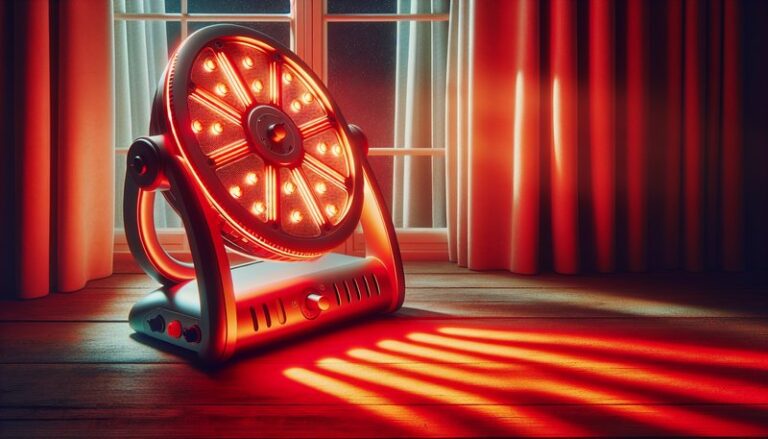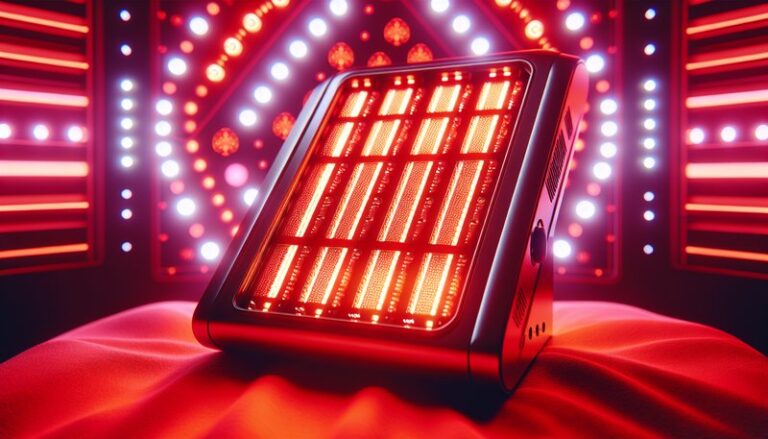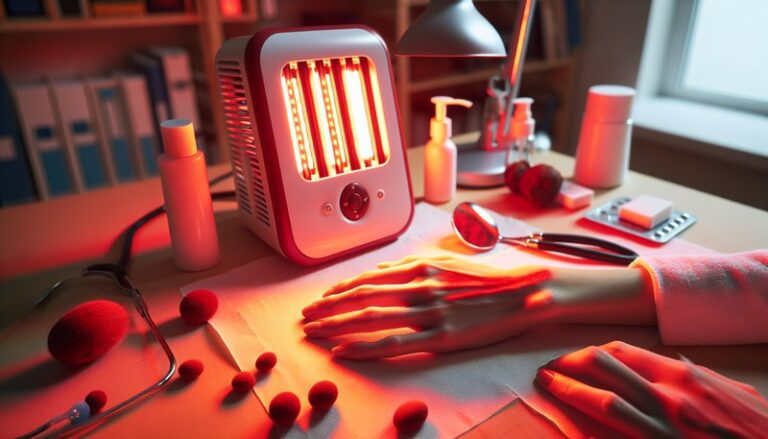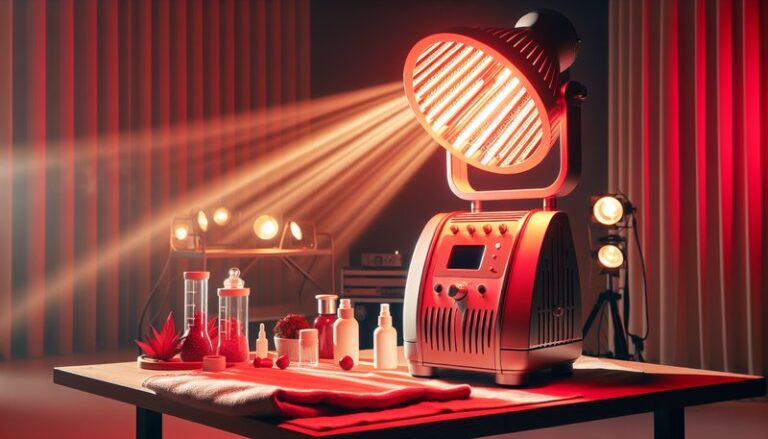How Often Should You Do Red Light Therapy?
How Often Should You Do Red Light Therapy?
Have you ever wondered how often you should be using red light therapy to achieve maximum benefits? Understanding the frequency of red light therapy treatments can significantly enhance your experience and results.
In this article, we’ll delve into the optimal frequency for red light therapy, discussing its benefits, considerations to keep in mind, alternative therapies, and more. By the end, you should have a clearer picture of how often you should incorporate this innovative treatment into your wellness routine.
Check out the full post Works?
Key Takeaways
- Red light therapy can be beneficial for various conditions, including skin issues and pain relief.
- The recommended frequency often varies based on specific goals and individual needs.
- It’s important to consider skin type, sensitivity, and the type of device used when determining your therapy schedule.
What is Red Light Therapy?
Red light therapy involves the use of specific wavelengths of light, typically around 600 to 660 nanometers, to stimulate cellular processes in the body. It is a non-invasive treatment that encourages healing, reduces inflammation, and promotes skin rejuvenation. This therapy is commonly used in various fields such as dermatology, sports medicine, and pain management.
This technique is believed to work by enhancing mitochondrial function in cells, leading to improved energy production and cellular repair. Due to its versatility, red light therapy has gained popularity among both healthcare professionals and those seeking alternative wellness treatments.
What are the Benefits of Red Light Therapy?
Red light therapy offers a broad spectrum of benefits that can cater to various health and wellness needs. The following points will explore these advantages in detail.
Promotes Skin Health
Red light therapy has shown promising results in improving skin texture, reducing wrinkles, and alleviating conditions such as acne or psoriasis. A study indicated that regular sessions can lead to visible improvements in skin elasticity and tone.
Reduces Pain and Inflammation
Many athletes and individuals suffering from chronic pain have turned to red light therapy for relief. By promoting blood flow and decreasing inflammation, it can significantly reduce pain levels and expedite recovery from injuries.
Enhances Wound Healing
Research suggests that red light therapy can accelerate the healing process for wounds and injuries. The therapy not only improves circulation in the treated area but also boosts tissue repair, making it valuable for medical and post-surgical applications.
Improves Mood and Energy Levels
Some users report enhanced mood and energy following red light therapy sessions. While more research is necessary, the therapy’s potential to influence serotonin production may contribute to these positive mental health effects.
Is it Possible to Do Red Light Therapy Daily?
Yes, many individuals choose to perform red light therapy daily, but this can depend on personal goals and skin tolerance. If you’re new to the therapy, it is essential to start with a balanced approach and gradually increase the frequency if your skin reacts positively.
What are the Advantages of Daily Red Light Therapy?
Daily sessions can lead to quicker results, especially for specific goals such as pain relief or accelerated wound healing. The consistent application of red light can help maintain elevated energy levels and improve skin health over time.
What are the Disadvantages of Daily Red Light Therapy?
On the other hand, daily use may lead to skin irritation or sensitivity in some individuals. It’s crucial to monitor your body’s responses and adjust the frequency accordingly, as overuse can potentially have negative effects.
What are the Things to Consider Before Starting Red Light Therapy?
Before committing to a specific frequency of red light therapy, consider these essential factors.
Type of Device
Different devices offer varying wavelengths and intensity levels. Ensure that the device you choose is appropriate for your specific goals, whether that be skin rejuvenation or pain relief.
Skin Sensitivity
Individual skin types may react differently to red light therapy. Those with sensitive skin should start with shorter sessions and gradually work their way up to longer treatments.
Goals of Treatment
Your objectives will significantly dictate how often you should perform red light therapy. Tailor your frequency based on whether you’re using it for cosmetic reasons, healing purposes, or pain management.
Individual Health Conditions
If you have underlying health issues or are taking medications that affect light sensitivity, consult with a healthcare professional before starting therapy.
For the full story, read Is Red Light Therapy safe during pregnancy?
What are the Alternatives to Red Light Therapy?
If red light therapy doesn’t suit your preferences, several alternative options are worth exploring.
Laser Therapy
Laser therapy uses focused light beams for various medical and cosmetic purposes. It can be effective for skin treatment, hair regrowth, and pain relief.
Ultrasound Therapy
This technique utilizes sound waves to promote healing and reduce pain. It is often used in physical therapy settings and may be more suitable for deeper tissue conditions.
Cryotherapy
Cryotherapy involves exposing the body to extreme cold to relieve inflammation and pain and accelerate recovery. This alternative can be beneficial for athletes and those with chronic pain.
Acupuncture
As a holistic approach, acupuncture targets specific points in the body to relieve pain and tension. This ancient practice has been linked to various health benefits and can also be complementary to red light therapy.
Conclusion: Is it Recommended to Do Red Light Therapy Daily?
In summary, red light therapy can offer impressive benefits for skin health, pain reduction, and overall wellness. While daily use may be suitable for some, it’s essential to listen to your body and adjust the frequency based on personal needs. Individual goals, skin sensitivity, and type of device are vital factors that will shape your red light therapy journey.
Frequently Asked Questions
How long should each red light therapy session last?
Typically, sessions last between 10 to 30 minutes, depending on the treatment area and the device used. It’s important to follow the manufacturer’s recommendations.
Can I use red light therapy if I have sensitive skin?
Yes, but it’s advisable to start with shorter sessions and observe how your skin responds to the treatment. Gradual increases can help you find the optimal duration.
Is there an optimal time of day to do red light therapy?
While there is no universally optimal time, many users prefer morning or early afternoon sessions to boost energy levels. However, evening sessions can be calming and promote restful sleep.
How soon can I expect to see results from red light therapy?
Results can vary, but many individuals report improvements within a few weeks of consistent use. For chronic conditions, it may take longer to notice significant changes.
Are there any side effects associated with red light therapy?
Generally, red light therapy is considered safe with minimal side effects. However, some people may experience minor skin irritation or sensitivity, particularly with overuse.






